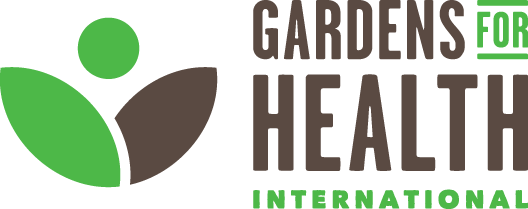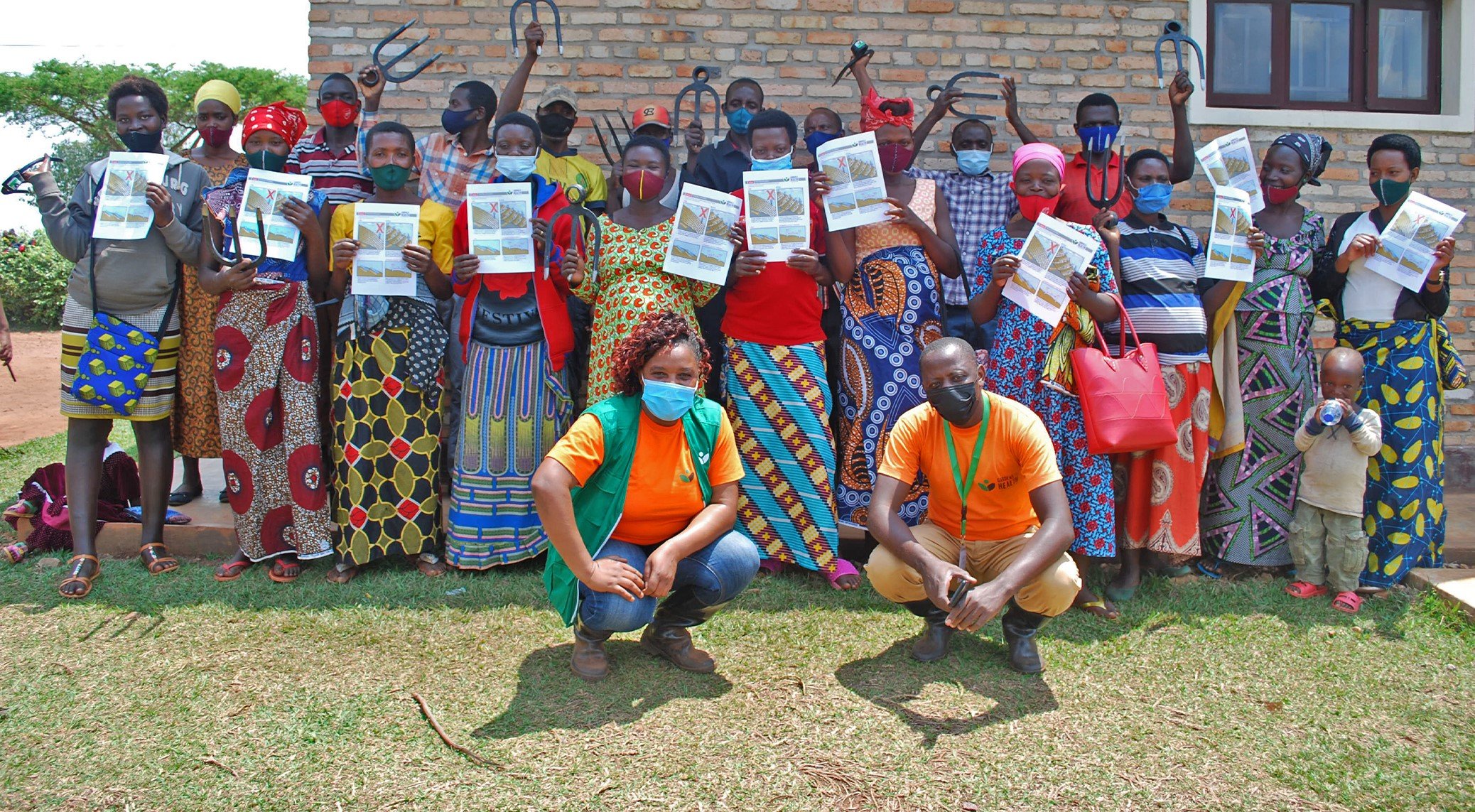Adopting Regenerative Agriculture Techniques to Fight Malnutrition Among Families
On 20th September 2021, in Kacyatwa, one of the Regenerosity community training sites located at Kayanga health clinic’s area of coverage, Gasabo District of Rwanda. This is one of the health clinics that is in partnership with Gardens for Health International (GHI) to promote community-based programs including promotion of regenerative agriculture. We met with a group of 40 participants that included enrolled pregnant mothers along with their husbands. GHI finds it imperative to engage men to work with their spouses to bring positive change to their households.
The goal of men’s engagement is to promote gender equality practices through promotion of positive masculine behaviors, enhanced men’s understanding and support to household initiatives including providing full support in promoting regenerative farming at household level. The topic of the day was bed building training which mostly focuses on empowering families with the capacity to establish different forms of vegetable gardens.
A total of 40 participants were broken into four groups, each with an equal number of men and women and partners were put in different groups to ensure they learn from each other as they engaged in a hands-on exercise.
GHI had provided tools such as hoes, spades, rakes, and watering cans which a significant portion was brought by participants. Each group through a self-selected team leader was given a garden to establish. Groups then kept rotating from one garden to another throughout the practical session to learn how different gardens are established.
Participants were very active and dynamic, they established 2 mandala gardens, double dug beds, sunken beds, flat beds and sack gardens.
Similar to other community based training during this period of a global pandemic, we started by reviewing the compliance to government established health guidelines such as taking and recording temperature measurements of participants, washing hands before entry to the training room and ensuring the sitting arrangements provides adequate social distancing between participants.
How the Day Unfolded
The session started by reviewing participant’s take away from the previous training, our famous '“home garden package” that focuses on different types of grown crops and seeds provided by GHI. It also encourages them to have seasonal plans and have informed decisions about which crops to grow in their back yards.
Participants were then taken through the topic of the day. The training was designed in ways that encourage participants to provide their opinions around existing community agriculture practices and then directed to understand the difference between the existing farming practices and regenerative agriculture.
Come Blaise, GHI field trainer at Kayanga Health Clinic then took them through the session on how to prepare double dug beds, sunken beds, mandala gardens, sack garden and flat bed. He was supported by Godfrey who took them through the pros and cons of each form of kitchen garden and encouraged them to prepare at least one of the gardens they learnt about back home.
A total of 40 participants were broken into four groups, each with an equal number of men and women and partners were put in different groups to ensure they learn from others. Groups were taken out to the nearest designated plot for a hands-on exercise. GHI had provided tools such as hoes, spades, rakes, and watering cans which a significant portion was brought by participants. Each group through a self-selected team leader was given a garden to establish. Groups then kept rotating from one garden to another throughout the practical session to learn how different gardens are established. The trainer facilitated a smooth directive throughout the hands-on session.
Participants were very active and dynamic, they established 2 mandala gardens, double dug beds, sunken beds, flat beds and sack gardens.
Establishing a nursery for indigenous vegetables and trees and growing them on the farm
As part of preparations for the long rainy season which starts in September, GHI established a vegetable nursery bed, composed of 6 indigenous vegetables such as amaranths, nightshade, spider plant, eggplant, turkey berries and Stinging nettle. The seedlings were later transplanted to different parts of the 5-acre demonstration farm and as donations to partner families in the community. The nursery also has five types of agroforestry trees which include tithonia, sesbania, calliandra, leucena and acacia. These trees are also planted on the GHI farm as part of increasing tree types on the farm.
Distribution of indigenous vegetables and legumes
Based on the overwhelming community needs during the COVID-19 pandemic, we dsirtributed indigenous vegetable and fruits to families. With it’s far-reaching effects on the Rwandan food system, COVID-19 left a big impact on the access and availability of seeds by community members. While this was not part of priorities for our partnership with Regenerosity, we received constant requests from local leadership for providing possible support to vulnerable families. In partnership with the local leadership, we were able to identify 150 families which were heavily affected and GHI provided education around vegetable growing and distributed vegetable seedlings from the nursery established. We also distributed vegetable seeds and seedlings to 40 families from Kayanga and Nduba health clinics who are supported by regenerosity partnership. Distributed vegetables include nightshade, spider plants, amaranths, egg plants, turkey berries and stinging nettle. Among seeds, GHI distributed carrots, high iron beans, soya beans for direct seeding.
Composting (Piles and vermi composting)
We collected different materials such as crop waste and other decaying materials from a nearby local market, cow dung and other livestock waste, green leaves and stems of agroforestry trees, dry crop waste and kitchen peals. From that we established a big compost pile.
We also mixed the green plants especially leaves and stems of agroforestry trees, dry plant residues, kitchen peals and waste (especially the ones with high sugar content like banana and sugarcane peals), livestock manure especially mixture of cow dung and water, then added various species of worms such as red wiggles, white worms and other earth worms for decomposition.
Construction of Pig and turkey sheds
A 6-room piggery and shelter for turkeys currently stand at the farm as new homes for one pig and two turkeys.
With our partnership with Regenerosity, we are doing more for families and the community at large. To further support the families we work with, we occasionally conduct home visits to track their progress with the regenerative agriculture practices that they learn through the program. In Kayanga and Nduba health clinics, we recognized the families’ appreciation of the new agriculture techniques that they are practicing at home. For many of the families, husbands husbands have heavily established gardens at their back yards and are working alongside their partners to ensure that they are well managed.







